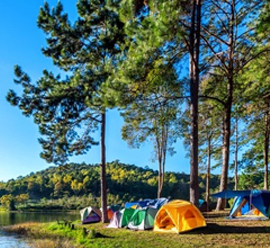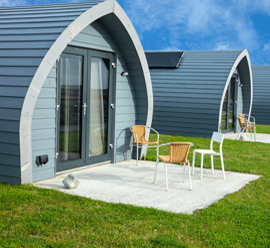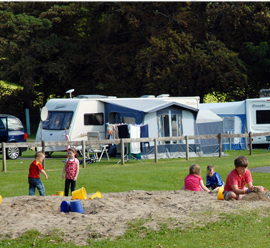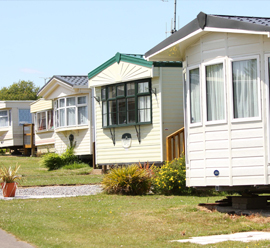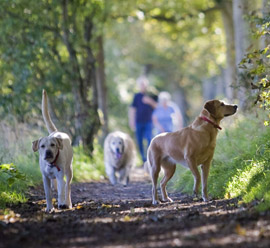Frequently Asked Questions
Frequently asked questions for holidaying in Ireland with your caravan or motorhome
You can choose between two options to travel by ferry to Ireland:
From the UK you can take a ferry from Holyhead, Fishguard, Pembroke, Liverpool, Cairnryan and Isle of Man to Ireland
Travelling from mainland Europe you can take direct ferry service from the north of France (Cherbourg or Roscoff). The crossing to Cork, Rosslare or Dublin takes about 18 hours. You can also use the bridge connection across the UK.
The mild climate is suitable every season to visit Ireland. In winter, the temperature is about 8 ° C, during the day average of 18 ° C during the day. We recommend traveling outside the peak season in the months of April or May. But also in September or October you can enjoy the late summer in Ireland.
There are plenty of resting places along the coastal roads, where you can stretch your legs, enjoy the view, and of course take beautiful pictures. It is not intended that you stay longer on these rest areas, so it is often difficult to get to the parking lot for vehicles, which are higher than about 2.5 meters. Please note, if your caravan or motorhome is so high, you should plan the trip in advance so that you can already choose many places where you can easily hold. It is always possible to stop on the way to take photos, but the final destination should be an authorized place to stay. There are rest areas/pull-in areas on the motorways for short rest stops.
In the high season (July / August) it is highly recommended to book the pitch in advance. Outside of this period it is usually possible to get a place on a camping site without prior booking.
There are sites that are open all year, but most of the sites take a winter break. Please click here to find details on sites that remain open all year. Please check prior to travelling to ensure they are available.
To avoid difficulty replenishing your gas stock, we suggest you bring an adequate supply for your visit. Camping Gas International is widely available. Anything that burns fuel – gas/kerosene heaters, stoves, barbecues, generators etc. – can emit the lethal gas. So make sure appliances are installed, maintained and used correctly; ensure there’s adequate ventilation; and use an audible carbon monoxide alarm. For more information www.carbonmonoxide.ie
Most parks offer between 6 and 10 amps. The blue Euro male/female connection is standard.
If you wish to use mains electricity in a tent, please ensure you have a purpose-built lead fitted with the appropriate blue weatherproof plugs and sockets designed to connect to the site’s hook-up point and your unit.
These vary between sites. Some parks allow late check out, however a small fee may apply. Please check directly with the site before you travel for more information
- Most sites have dedicated pitches, and will allocate them for you.
- Use the correct bins on site. There will often be designated areas for disposing of different types of rubbish and recycling
- Most campsites have chemical disposal points. Never empty a cassette toilet at a grey or fresh water point.
- Campsites are great for kids to let their hair down and explore the great outdoors, but they should be supervised
- Noise travels on a campsite and you can hear everything – Observe quiet times between certain hours, such as late at night and early
Citizens from EU Member States may bring their pet cat, dog, or ferret with them provided they are accompanied with an EU Pet Passport. Each campsite and each pitch has its own rules on pets (e.g., dogs allowed but only on leash etc.) These rules are clearly marked by symbols in the legend of each park.
For further information on bringing your pet to Ireland visit: http://www.agriculture.gov.ie/pets/
Camping Key Europe (CKE) is accepted by many camping sites and pitches in Ireland. Cardholders often receive discounts on overnight stays.
General Tourism Information
The population of the Republic of Ireland (26 counties) is 4.9 million. Dublin is the largest City with over one million inhabitants, Cork the second largest City and Limerick, Capital of the Shannon Region, is the third.
Everyone in Ireland speaks English. The country is bilingual, English and Irish (the Gaelic language). Signs are in both English and Irish.
Frequently asked questions regarding holidaying in Ireland
Dress for the weather! Temperatures can vary dramatically from day to day. It can be cold and wet the winter- November to February. In summer it is warmer but can still be wet and windy. Be prepared!
The standard electrical supply is 230 volts AC (50 cycles); plugs are flat, with three pins. If required, small travel transformers should be purchased before departure to Ireland.
All shops are generally open from 09.00H to 17.30H Monday to Saturday. Many small local shops and grocery shops in villages and small towns open longer hours daily. Shopping centres and many other shops in cities have one or two late night openings (usually Thursday and Friday) and on Sundays.
Post offices are normally open from 09.00H to 17.30H Monday to Friday and 09.00H to 13.00H on Saturday. Almost every town and village has a main post office or a sub post office.
The following are the public holidays in the Republic of Ireland. Most companies and shops are closed on these days.
January 1st: New Year’s Day
March 17th: St. Patrick’s Day
Friday before Easter: Good Friday
Monday after Easter: Easter Monday
First Monday in May: May Day Holiday
First Monday in June: June Holiday
First Monday in August: August Holiday
Last Monday in October: October Holiday
December 25th: Christmas Day
December 26th: St. Stephen’s Day
In the Republic of Ireland, the official currency is the euro. In Northern Ireland, pound sterling is the local currency. Visa and Mastercard are widely accepted throughout the island of Ireland; American Express is accepted in some places but not all. Credit cards and Debit cards can be used for purchases and also to withdraw cash from ATMs.
Ireland’s passport and visa requirements vary for different nationalities so check with your local Irish embassy or consulate before you travel. Most people need a valid passport to enter the Republic or Northern Ireland but there are some exceptions:
• If you’re a UK citizen, you can also use official photo identification.
• If you’re an EU citizen, you can also use a national identity card.
Air and sea carriers require some form of photo identification (usually either a passport or driving licence), so ALWAYS check what form of ID is required with your individual airline, Ferry Company or travel agent before travelling.
You should always obtain travel insurance to cover any potential overseas medical costs including medical repatriation/evacuation, repatriation of remains and legal costs, before you travel. Be sure to check for any exclusions that might affect your policy and that it covers all the activities you plan on doing in Ireland, and make sure that your travel insurance has medical cover. If you’re a member of the 28 EU countries or Iceland, Lichtenstein, Norway and Switzerland, bring a European Health Insurance Card (EHIC), which covers you for most medical care.
Make a note of the emergency numbers and official organisations to call or contact when in Ireland
Republic of Ireland Tel: 112 or 999
Northern Ireland Tel: 999
The fire, ambulance and police services in Ireland and Northern Ireland are all contactable via the above numbers. When calling emergency services you will be asked to provide the following:
- The exact address of the incident or emergency and/or any noticeable landmarks nearby.
- Directions to the scene of the emergency
- The telephone number you are calling from
- Details on the incident itself, the number of persons involved the description, any visible injuries and knowledge of any pre-existing medical conditions.
Roads in Ireland are generally of a high standard. They range from motorways and dual carriageways to secondary roads with two-way traffic and winding country lanes.
In the Republic of Ireland, motorways are prefixed with an “M” (for example M50). National roads are prefixed with an “N” (for example N18). Secondary roads may also be dual-carriageways or have two way traffic.
Roads in Northern Ireland are prefixed with an “M” for motorway; an “A” and a “B” for primary and non-primary roads. Signs in the Republic of Ireland show distances in kilometres, while in the North miles are used.
Toll roads
There are no tolled roads in Northern Ireland but you’ll find tolls on a number of roads in the Republic of Ireland (Disabled drivers are not charged tolls on roads in the Republic of Ireland). These are managed by the National Roads Authority and Dublin City Council. Generally tolls are paid at the barrier of the toll booth; however, there is one exception – M50 eFlow Barrier System.
M50 eFlow Barrier System
There is a barrier-free toll system in operation on the M50 ring road around Dublin. Instead of paying your toll at a toll booth, the system will record your trip by photographing your vehicle’s licence plate number. It is important to pay your toll before 8pm the next day, either online, in branded Payzone outlets or by LoCall 1890 501050.
Here are some pointers for careful and safe driving in Ireland.
1. Seatbelts:
It is compulsory for both front and rear seat-belts to be used in Ireland, both North and South. Children under age 12 must ride in rear seats.
2. Traffic Flow:
Traffic travels on the left-hand side of the road.
3. Speed Limits:
Speed limits are 50kph in built up areas and in cities. 100kph on Dual Carriageways and the open road. Motorways 120kph.
4. Documents:
A valid driver’s license in English
5. Mobile Phones:
Do NOT, under any circumstances, drive while talking on mobile phones. Pull over and stop before using your phones.
Never ever drink and drive, there are severe drink driving penalties

